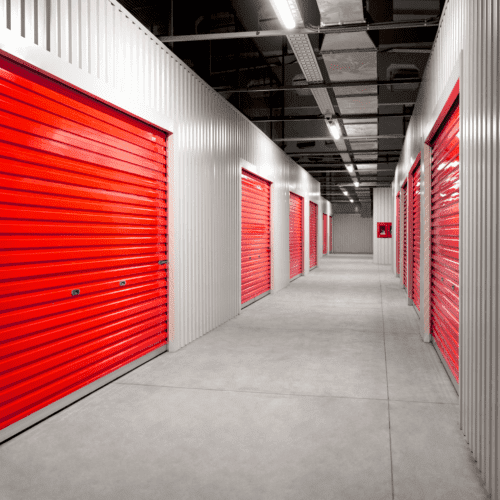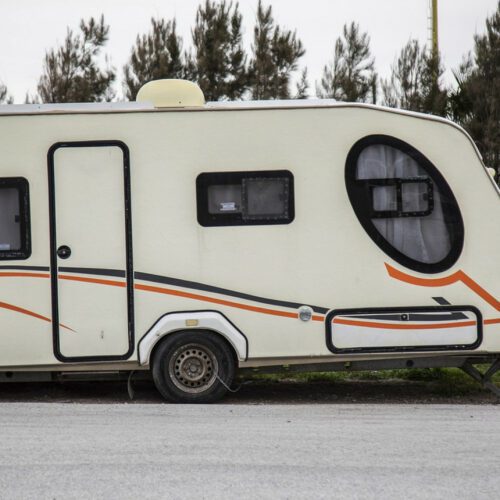Have you ever wondered if living in a storage unit could be a viable option in Australia? With rising housing costs and a growing demand for affordable living spaces, unconventional solutions might cross your mind. Storage units, with their low rental prices and flexible terms, may seem like an appealing choice at first glance.
If you’re after the most affordable self storage Adelaide has to offer, speak to our friendly team at Access Self Storage.
However, before you consider making one your home, it’s essential to understand the legal, practical, and safety implications. While the idea might sound creative, it’s not as straightforward as it appears. From zoning laws to health concerns, there’s a lot to unpack when it comes to this unconventional living arrangement.
Understanding Storage Units In Australia
Storage units in Australia provide secure and versatile spaces for short or long-term storage needs. They’re typically used by individuals and businesses for storing personal belongings, business inventory, and seasonal items.
What Are Storage Units Designed For?
Storage units are designed to safely store goods in an organised, controlled environment. They’re equipped with features like climate control, security systems, and easy accessibility to accommodate stored items. Examples include furniture, electronics, documents, and sports equipment. Operators focus on maximising storage efficiency, not habitation, with unit layouts lacking essential living amenities such as plumbing, kitchens, or ventilation systems suitable for residential use.
Legal Restrictions On Using Storage Units
Zoning laws and building codes in Australia strictly regulate the usage of storage units. These laws prohibit using units as residential dwellings, ensuring compliance with health, safety, and property standards. Breaching regulations carries significant penalties, including fines and eviction. Council zoning typically designates storage facilities as commercial or industrial spaces, making any residential use a direct violation of local government policies.
Is It Legal To Live In A Storage Unit In Australia?
Living in a storage unit in Australia breaches several legal requirements. Zoning regulations and building codes classify storage units as non-residential facilities, restricting their use as living spaces.
Australian Property And Rental Laws
Australian property laws enforce strict standards for residential dwellings. Storage units fall under commercial property categories, not residential zoning. Planning and development regulations dictate land use, ensuring spaces meet minimum safety and habitability standards. Storage facilities lack plumbing, ventilation, and insulation, making them non-compliant with basic health and safety laws.
Rental laws protect tenants by requiring landlords to provide a fit-for-purpose residential space. Legal tenancy agreements cannot cover storage units as homes, making such arrangements invalid. Violating these frameworks risks penalties for both occupants and facility managers.
Potential Consequences Of Living In A Storage Unit
Occupying a storage unit as a living space exposes you to financial, legal, and safety risks. Authorities impose fines for violating zoning regulations or breaching rental laws. Eviction is probable, as facility managers monitor compliance. Repeat violations could lead to further legal action.
Safety issues arise from unsuitable living conditions. Units lack fire safety measures, hygiene amenities, and adequate ventilation. Extended stays could endanger health and well-being, adding medical costs to existing risks. Additionally, insurance policies do not cover residential use of storage facilities, leaving personal possessions unprotected in case of loss or damage.
Reasons People Consider Living In Storage Units
The concept of living in a storage unit often arises from necessity or misinformed beliefs. Understanding these reasons highlights the underlying challenges.
Financial Constraints Or Homelessness
Limited financial resources often push individuals to seek unconventional housing. With rental prices escalating in major Australian cities like Sydney and Melbourne, storage units may appear to offer an affordable alternative. Some people facing homelessness, particularly in urban areas, view these units as a temporary solution due to their relatively low monthly costs. However, the lack of essential facilities, such as access to water and electricity, makes this arrangement impractical.
Misconceptions About Storage Units
Misunderstandings about the purpose and capabilities of storage units also contribute. You might assume these units are suitable for habitation because they appear secure, private, and accessible. Climate-controlled units, designed to protect belongings from extreme temperatures, might reinforce the belief that they’re adequate for living. However, these spaces are strictly designated as non-residential and lack the structural requirements defined by Australian building codes for living quarters.
Risks And Challenges Of Living In A Storage Unit
Living in a storage unit in Australia can lead to various risks and challenges. These risks not only affect your safety but also expose you to legal and practical difficulties.
Health And Safety Concerns
Storage units are not designed for habitation, creating significant health and safety hazards. Poor ventilation in these units increases the risk of respiratory problems due to inadequate airflow or potential mould growth. Limited access to natural light can negatively impact your mental well-being. Additionally, security systems like alarms or motion detectors may activate unexpectedly, causing stress or other disruptions.
The lack of fire safety measures, such as proper exits or alarms suitable for residents, increases the danger in emergencies. Occupying a unit in a commercial area with no overnight security staff could leave you vulnerable to personal safety risks. These challenges compromise the basic living standards required for human habitation.
Lack Of Essential Amenities
Storage units lack essential features necessary for daily living. There are no bathrooms, kitchens, or water supplies, making it impossible to maintain proper hygiene or prepare meals. Without electricity, you cannot power appliances, lighting, or heating.
Adapting these units for living purposes, such as attempting to set up portable amenities, is usually against facility regulations and Australian housing laws. Even with creative modifications, the absence of basic infrastructure results in unsustainable living conditions over time.
Alternatives To Living In A Storage Unit
Exploring other living options is crucial if you’re considering unconventional solutions like storage units. Numerous legal and practical alternatives ensure safety, comfort, and compliance with Australian laws.
Affordable Housing Options
Low-cost rental housing offers budget-friendly living arrangements. Look for shared accommodations, granny flats, or co-living spaces in your area. Websites like Flatmates.com.au or Gumtree provide affordable rental listings in cities like Sydney, Brisbane, and Melbourne. Sharing utilities and rent with housemates can significantly reduce overall costs.
Tiny homes are another practical solution for affordable living. These compact, self-contained houses are cost-efficient and eco-friendly, providing basic amenities like water, electricity, and sanitation. Many councils allow tiny homes under specific planning permits, making them a legal and sustainable option.
Caravan parks provide low-cost housing with essential facilities. These parks offer kitchen, bathroom, and laundry areas, ensuring a more permanent and legal living arrangement than storage units. Many parks are located close to urban centres, making them a convenient choice for people with limited budgets.
Government And Community Support
Access housing assistance through government programmes. Services like the National Housing and Homelessness Agreement (NHHA) or local housing authorities connect individuals with affordable accommodation and rental assistance schemes. This support can reduce financial burdens while addressing long-term housing needs.
Not-for-profit organisations in Australia provide emergency and transitional housing support. Groups like Mission Australia and The Salvation Army offer accommodation services, particularly for those facing financial hardship or homelessness. You can also engage with community housing providers that specialise in affordable rentals tailored to your income level.
Rent subsidies and financial aid schemes further support low-income households. State-based initiatives, such as Rent Assistance (Centrelink), make private rentals more accessible by offsetting high rental costs. Engaging with these programmes ensures you’re informed and secure when considering housing alternatives.
Conclusion
While the idea of living in a storage unit in Australia might seem like a creative solution to rising housing costs, the reality is far from practical or legal. These spaces are not designed for habitation and come with significant risks to your safety, health, and financial security.
Instead of pursuing an option that could lead to fines or unsafe conditions, consider exploring affordable housing alternatives that comply with Australian laws. Options like shared accommodations, tiny homes, or government housing assistance can offer a safer and more sustainable path forward.
Your well-being and security should always be the priority when seeking a place to live.
Frequently Asked Questions
1. Can you legally live in a storage unit in Australia?
No, it is illegal to live in a storage unit in Australia. Zoning laws and building codes classify storage units as non-residential spaces, and inhabiting them breaches these regulations. Violating the law can result in hefty fines and immediate eviction.
2. Why are storage units unsuitable for living?
Storage units lack essential amenities like running water, kitchens, toilets, and ventilation. They are designed for storage, not habitation, and living there can pose health, safety, and legal risks.
3. What happens if you live in a storage unit?
Living in a storage unit can lead to legal penalties, including fines and eviction. Additionally, you may face health risks from poor ventilation and sanitation. Personal property may also be uninsured.
4. Are there affordable alternatives to living in a storage unit?
Yes, alternatives include shared accommodations, low-cost rental housing, granny flats, co-living spaces, tiny homes, and caravan parks. Government housing assistance programmes and not-for-profits can also offer support.
5. Why do some people consider living in a storage unit?
People may consider it due to financial struggles and the perception that it’s a cheap solution. However, this is impractical as storage units don’t meet basic living standards.
6. Are there health risks associated with living in a storage unit?
Yes, health risks include poor ventilation causing respiratory issues, lack of natural light impacting mental health, and inadequate hygiene due to the absence of bathrooms or kitchens.
7. Can storage units provide safety for overnight stays?
No, storage units lack proper fire safety measures, and most facilities do not have overnight security. This makes them highly unsafe for habitation.
8. Are storage units insured for residential use?
No, storage units are categorised as commercial properties. Insurance policies do not cover residential use, leaving your belongings unprotected.
9. How can I find affordable housing in Australia?
You can explore shared housing, government-supported housing schemes, or consider options like granny flats and caravan parks. Support services and not-for-profit organisations often help those in need.
10. Is adapting a storage unit for living allowed in Australia?
No, adapting a storage unit for living is against facility regulations and housing laws in Australia. Storage units are strictly for non-residential use.


